ECON 0150 | Economic Data Analysis
The economist’s data analysis pipeline.
Part 1.3 | Relationships Through Time
Data Structures
…three main relationships between data points.
The most effective summarization tool depends on the relationship between the data points.
| Cross-Sectional | Time-Series | Panel Data | |
|---|---|---|---|
| Focus | Multiple units, one time point | One unit, many times | Multiple units, many time points |
| Shape | Wide format | Long format | Long format |
| Ex. | Household income, 2025 | US GDP, 10 years | Household income, 10 years |
> we’ve spent the first part of the class on cross-sectional data
> we’ll spend a bit of time on panel and geographic data later
Exercise 1.3 | Data Structures
Lets identify the variable type for each dataset.
- Dataset 1:
household_incomes.csv - Dataset 2:
household_savings.csv - Dataset 3:
Monthly_Coffee_Prices.csv
Timeseries: Coffee Prices
What information should we use to set prices in January 2026?
Timeseries: Coffee Prices
What information should we use to set prices in January 2026?

> it’s difficult to know… do we choose the mode?
> lets just plot the price against time
Timeseries: Coffee Prices
What information should we use to set prices in January 2026?

> lets indicate with a line that these points are in squence
Timeseries: Line Graph
What information should we use to set prices in January 2026?
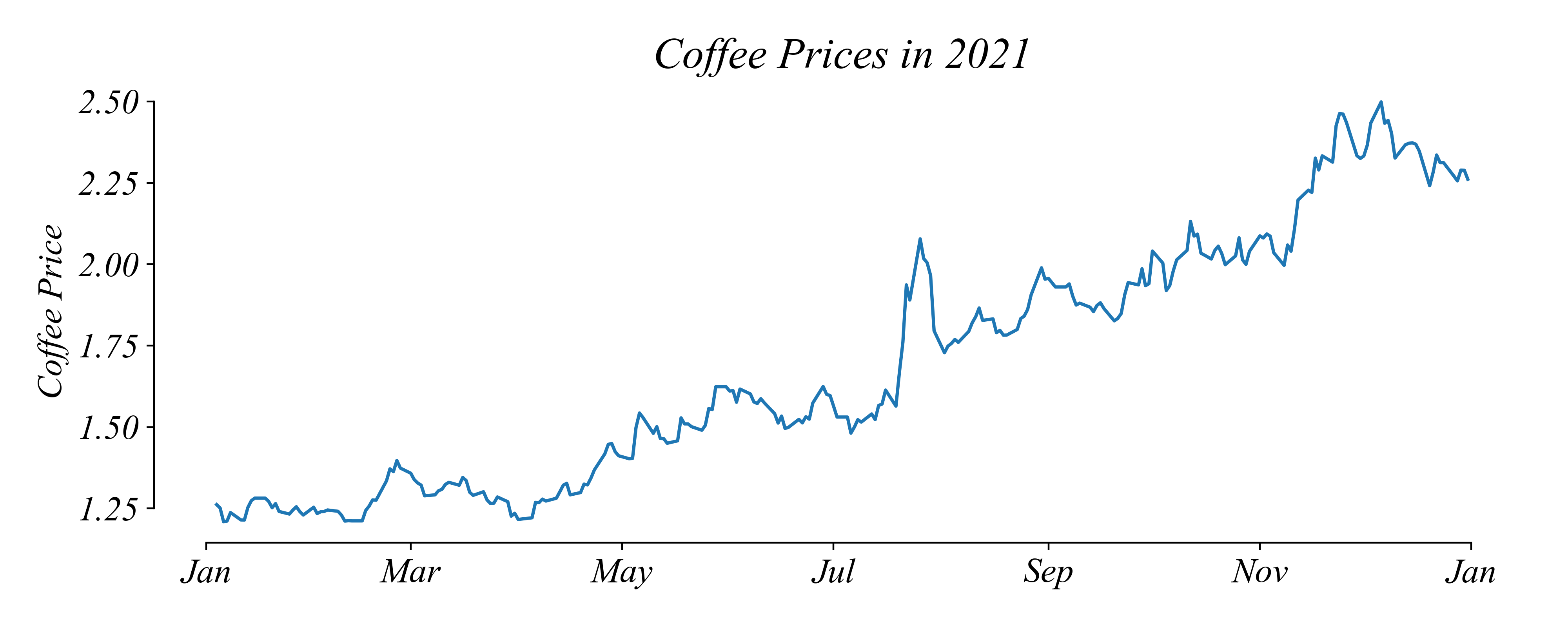
Timeseries: Trends
Do you notice a trend in price?

> there was a positive trend in 2021
> we can zoom out to get a bigger picture
Timeseries: Trends + Subtrends
Do you notice a trend in price?
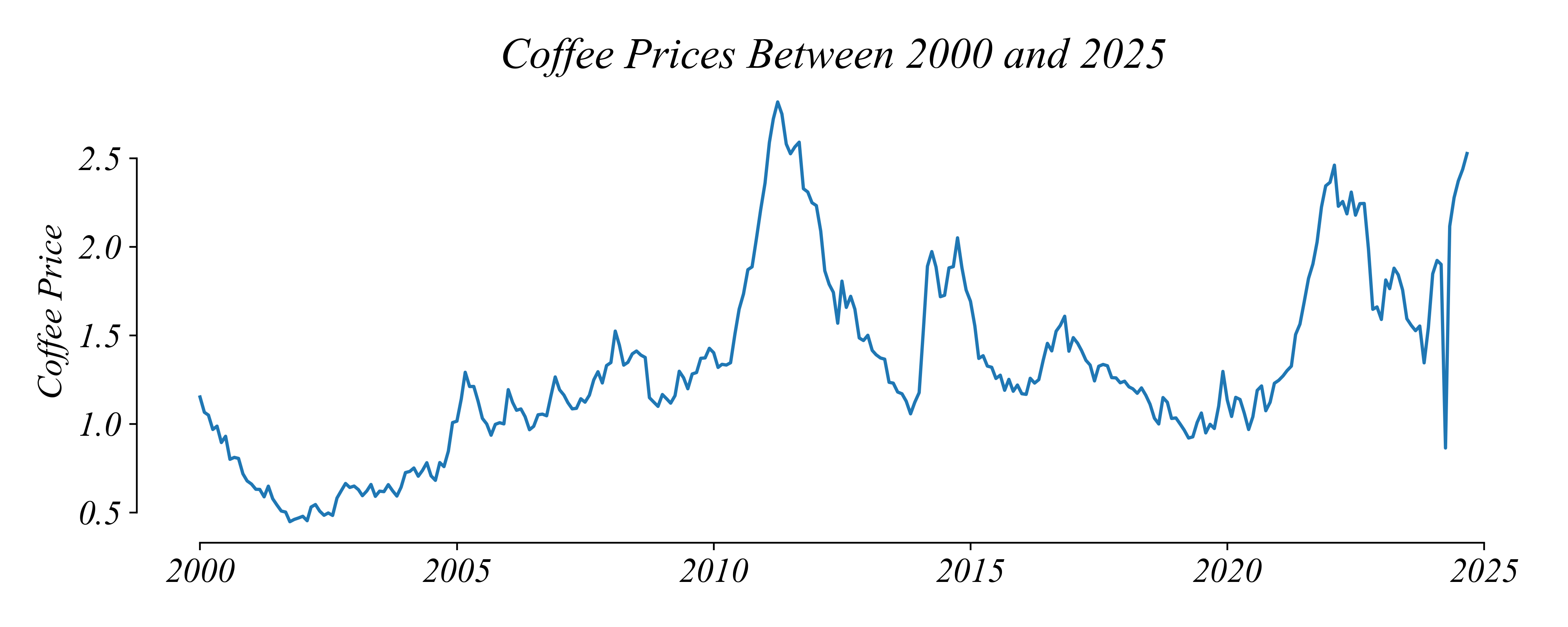
> how have prices changed since 2000?
> prices have increased somewhat, with many periods of decrease
Timeseries: Background Shading
What information should we use to set prices in January 2026?
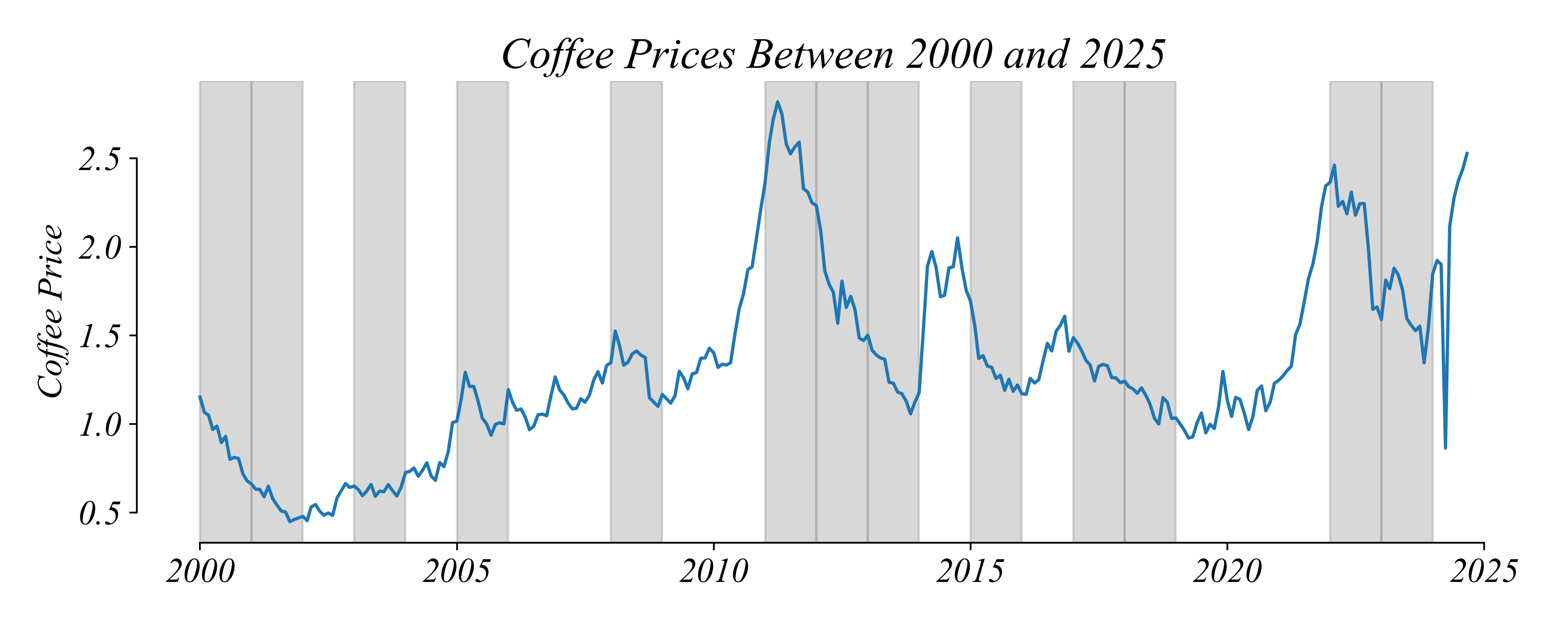
> with background shading its easier to see periods with a negative trend in price
Exercise 1.3: Timeseries
Lets use a linegraph to examine the trends in coffee prices.
- Data:
Coffee_Prices.csv
Exercise 1.3: Timeseries
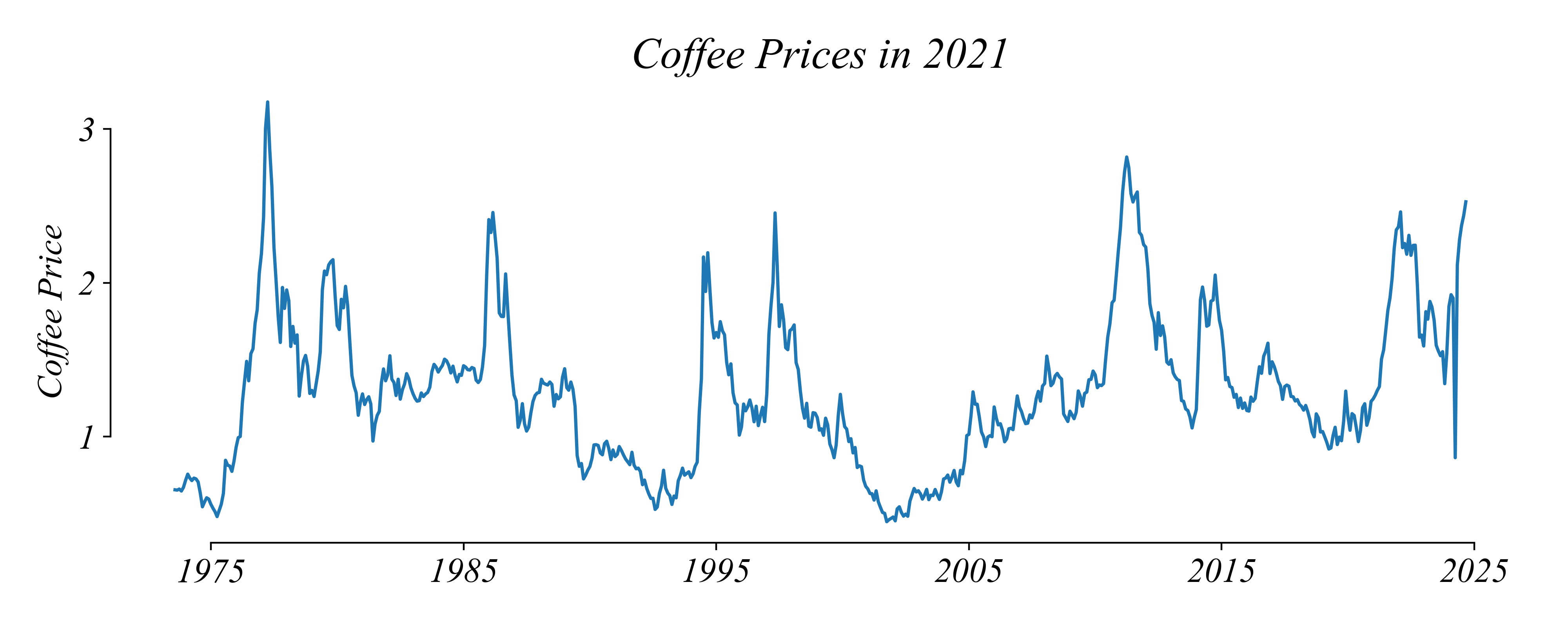
Timeseries
What information should we use to set prices in January 2026?
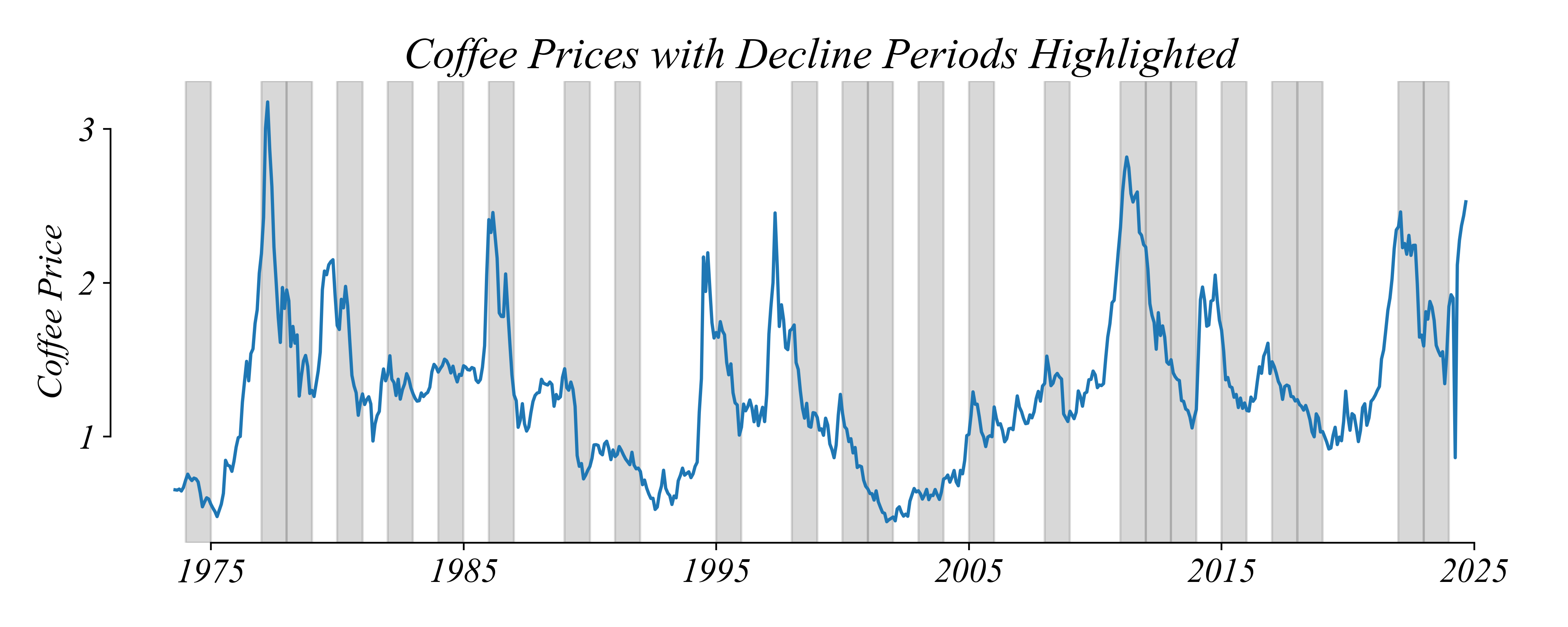
> could there be seasonal trends within the larger trend?
Seasonality: January
What information should we use to set prices in January 2026?

> a boxplot gives us a picture of the prices just in January
> lets compare this to other months
Seasonality: Monthly Boxplots
In addition to the overall trend, are there monthly patterns?

> lets be more specific…
Seasonality: Monthly Boxplots
In which month was the record highest price set?

Seasonality: Monthly Boxplots
In which month was the record highest price set?
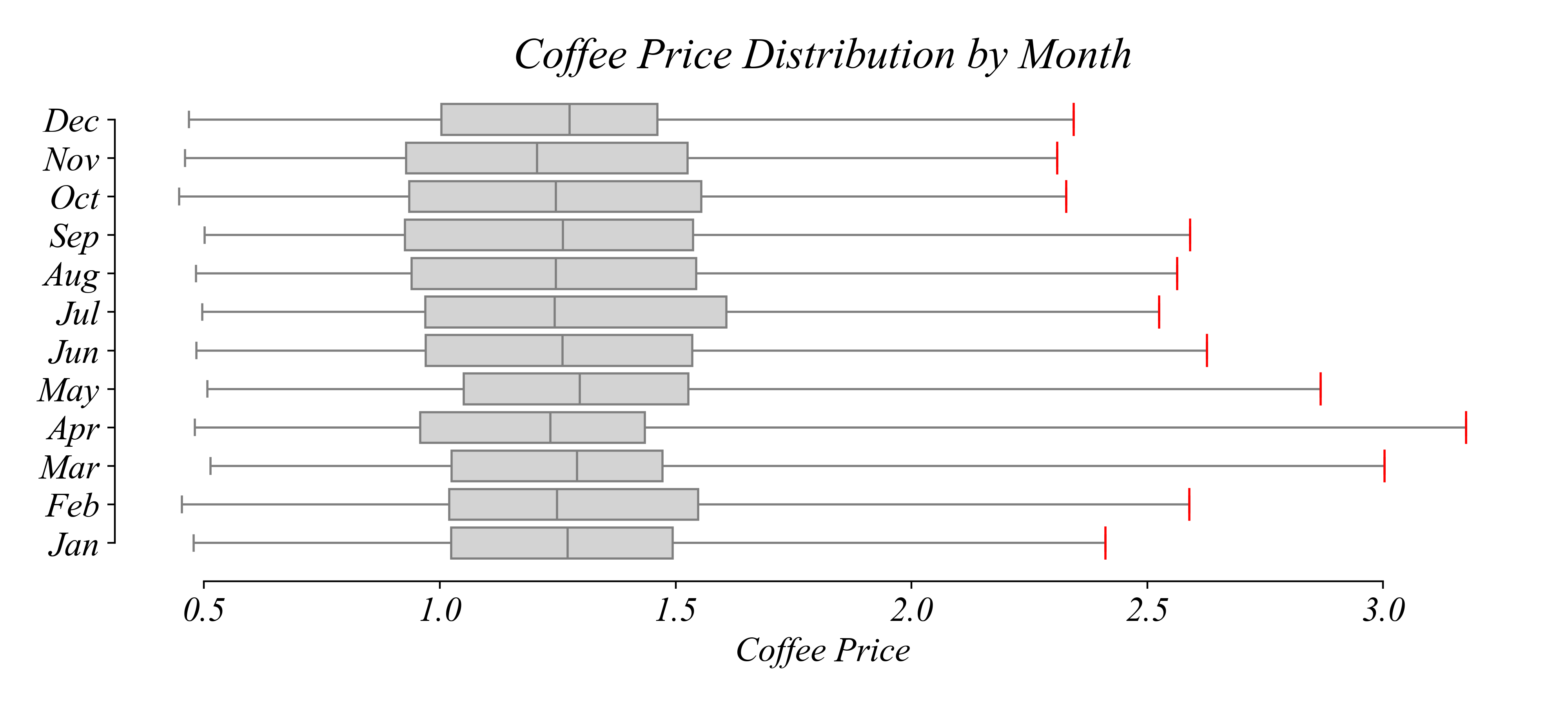
> look at the maximums
Seasonality: Monthly Boxplots
In which month was the record highest price set?

Seasonality: Monthly Boxplots
In which season are prices most spread out?

Seasonality: Monthly Boxplots
In which season are prices most spread out?
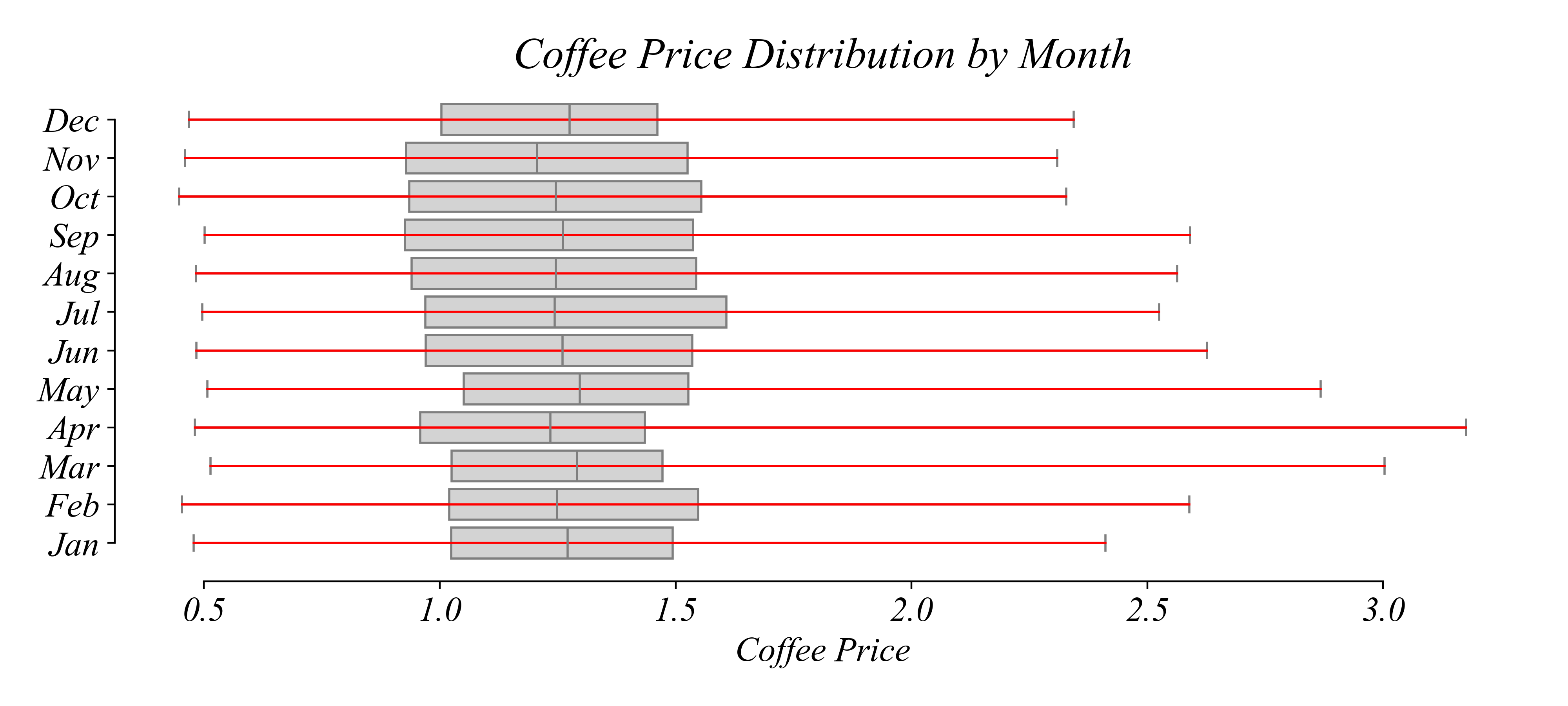
> look at the ranges
Seasonality: Monthly Boxplots
In which season are prices most spread out?
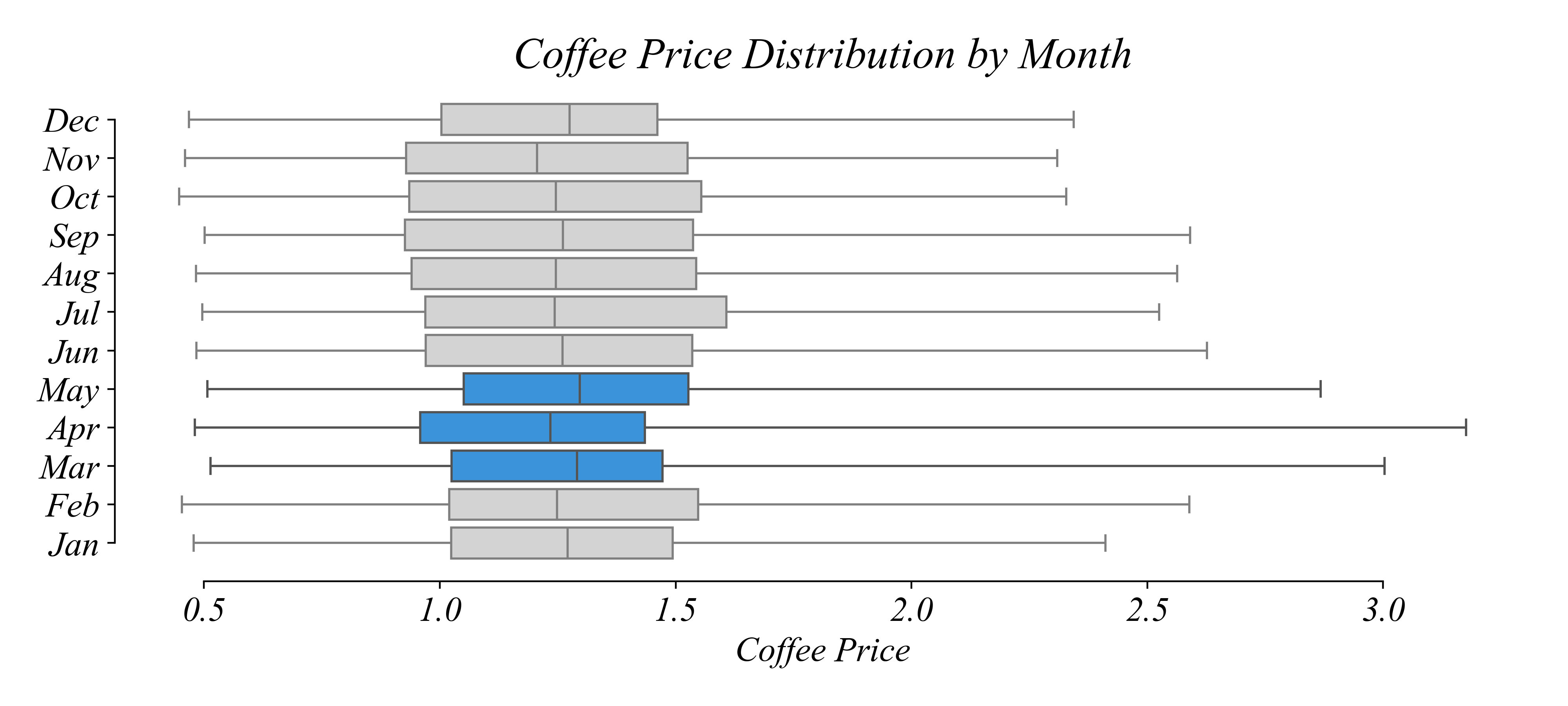
Seasonality: Multi-Boxplot
What is the trend in median price?
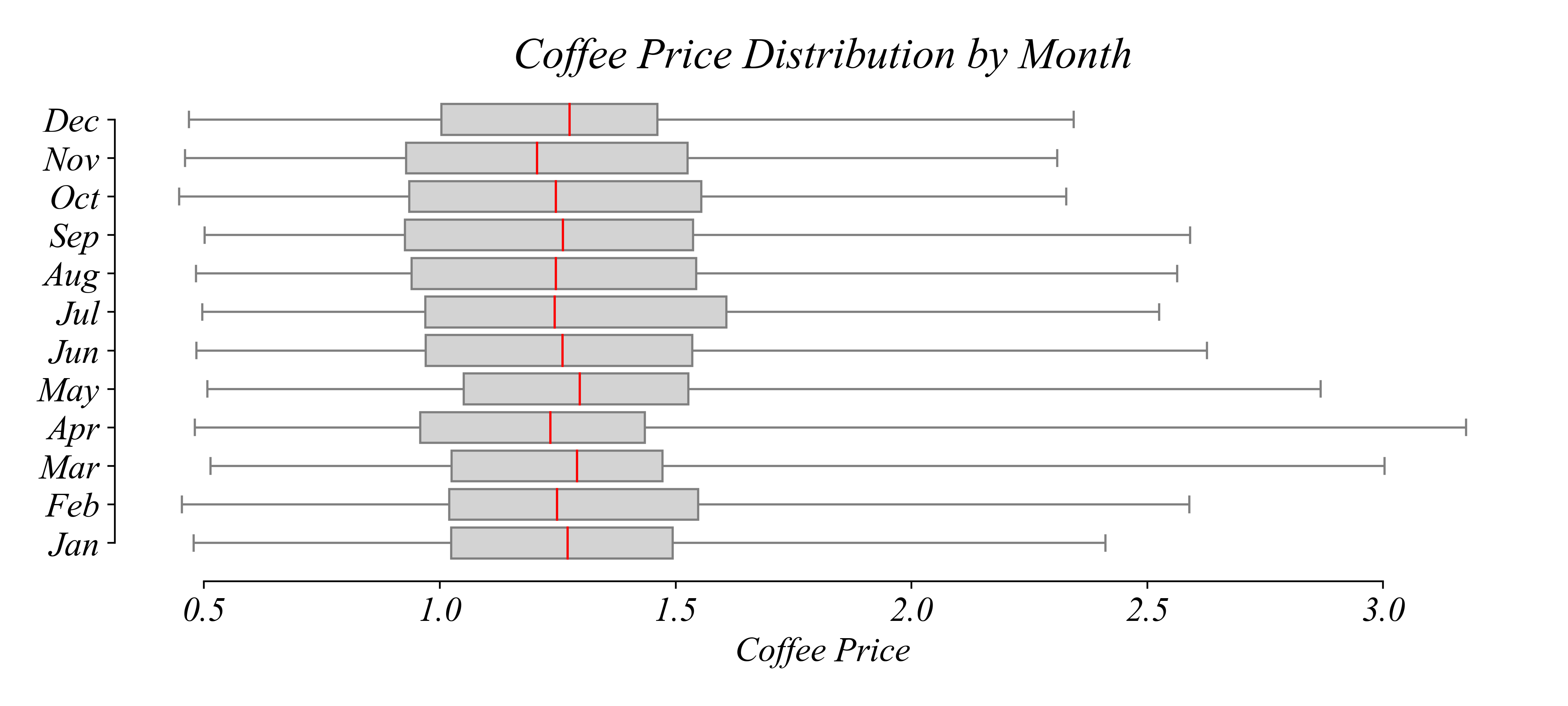
> look at the medians…
Seasonality: Multi-Boxplot
What is the trend in median price?

> look at the medians… pretty difficult to see
Seasonality: Quartile Lineplot
What is the trend in median price?
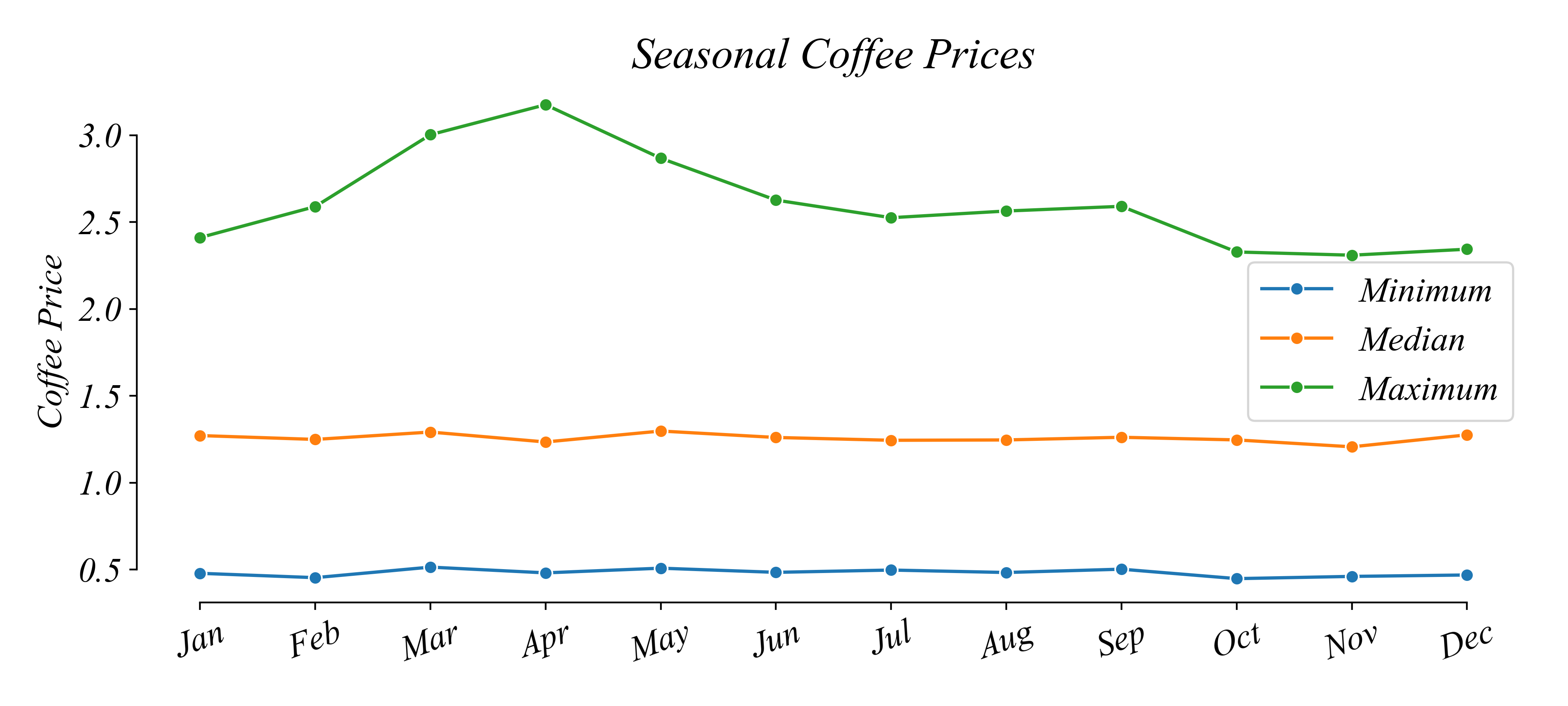
Seasonality: Quartile Lineplot
What is the trend in median price?
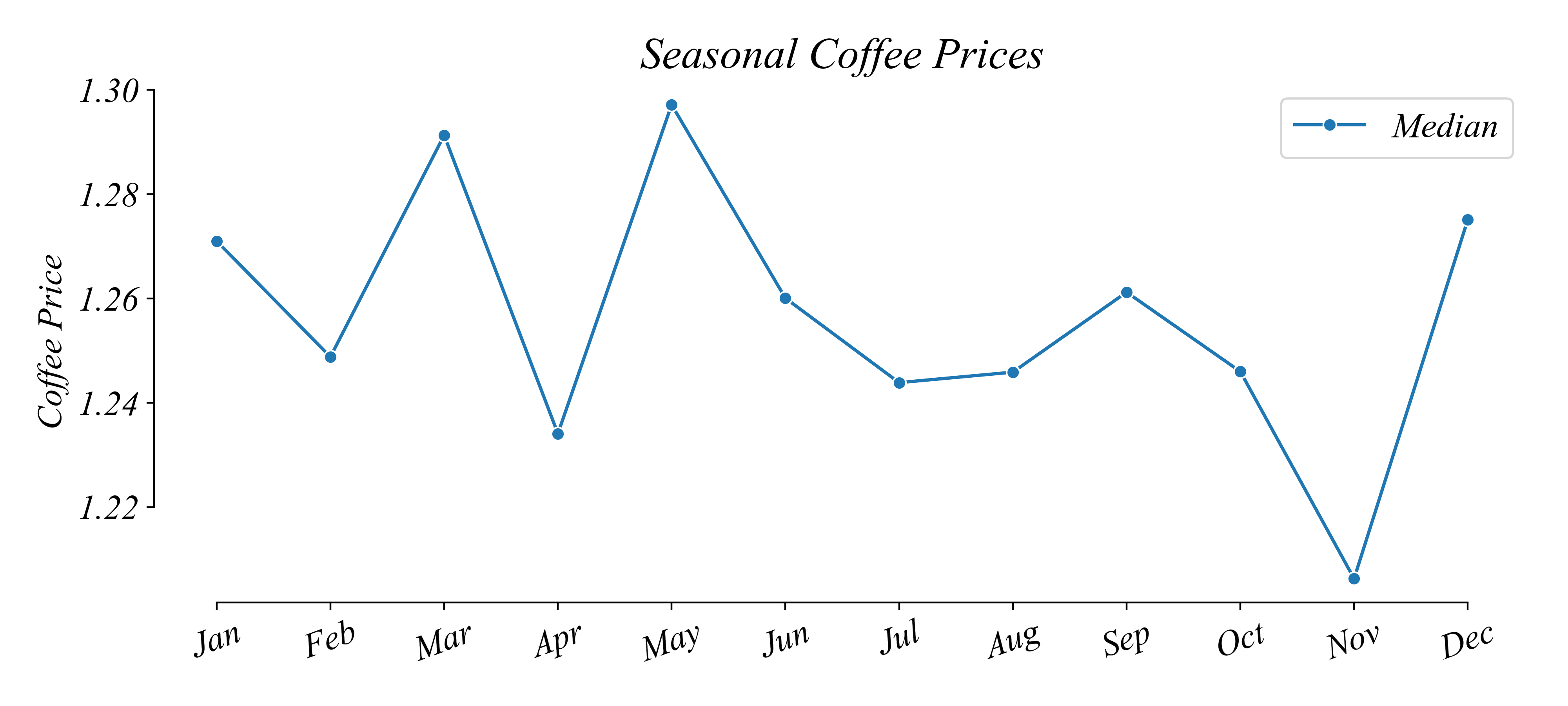
Seasonality: Quartile Lineplot
What is the difference between the largest and the smallest median price per pound?

> something like $1.30 - $1.21 = $0.09
Timeseries: Summary
Linegraphs show trends; multi-boxplots show between-period patterns.
- Use a linegraph to show a numerical variable through time.
- Highlight changes in a linegraph using shading.
- Use a multi-boxplot to show the distribution between multiple periods.
Exercise 1.3: Seasonality
Lets use a multi-boxplot to examine the seasonal patterns of coffee prices.
- Data:
Coffee_Prices.csv
Exercise 1.3: Seasonality
